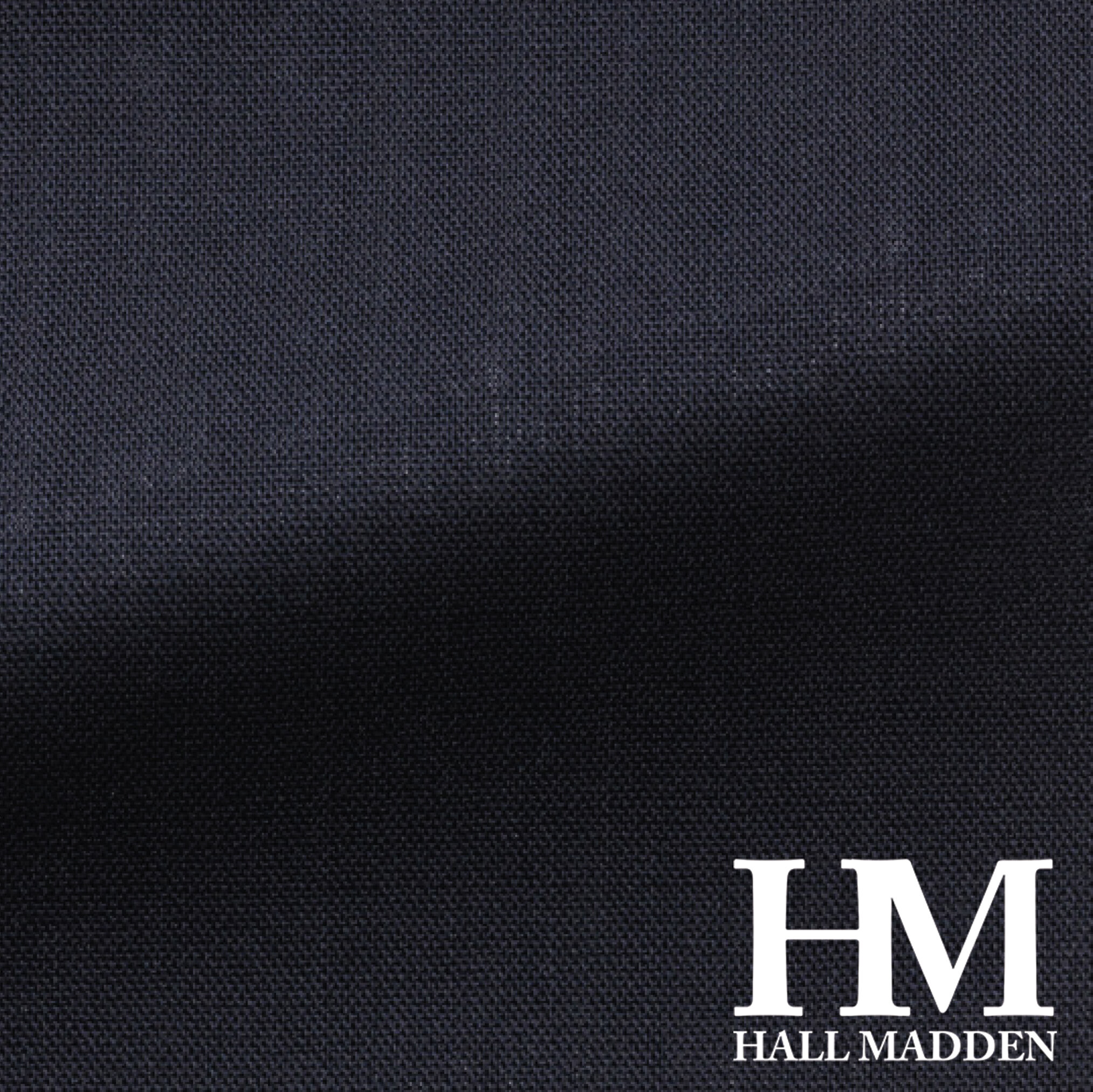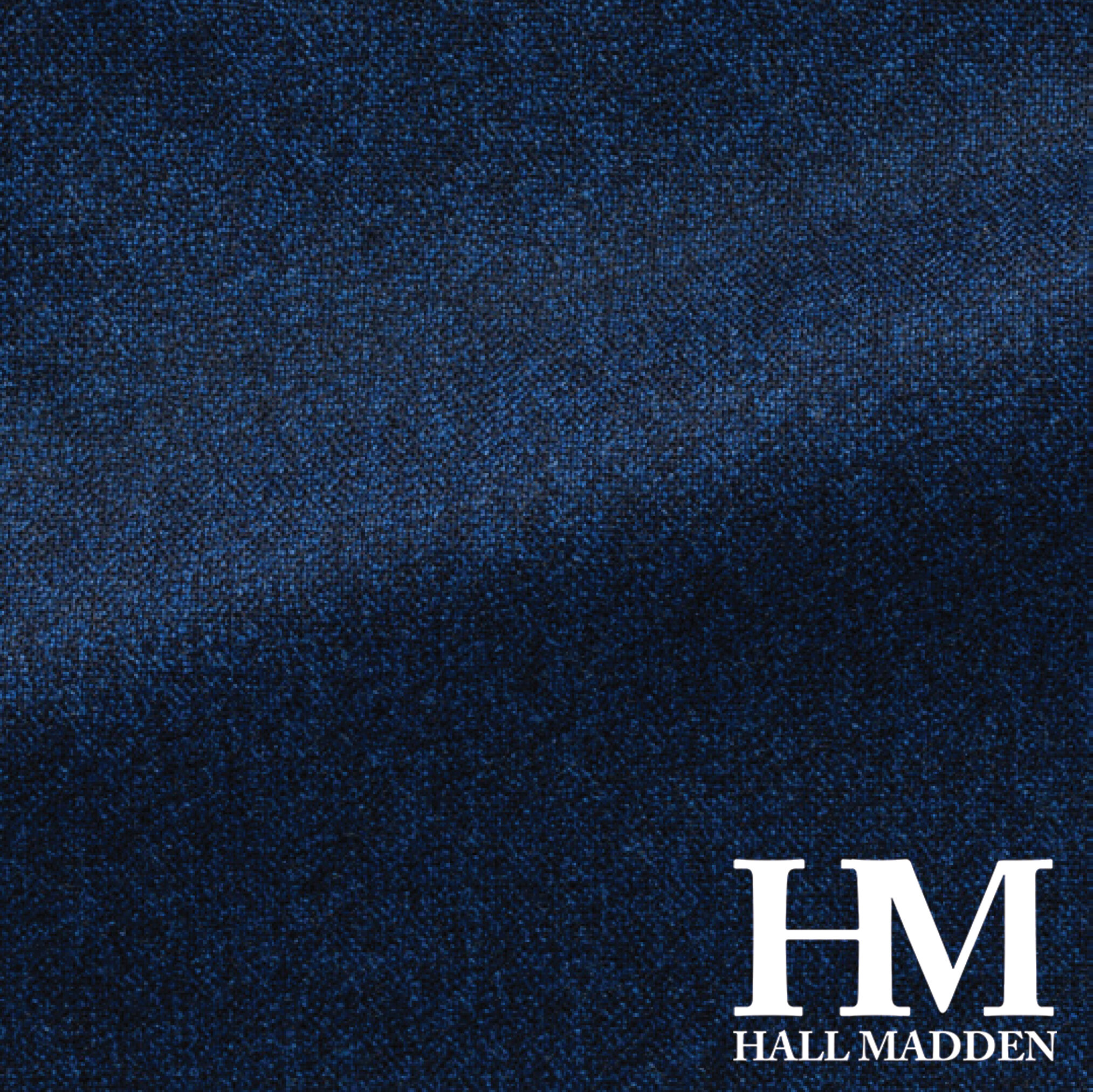What types of fabric weaves are there?
Once you have a suit in a basic and versatile weave (such as a twill, herringbone, birdseye, sharkskin or nailhead) we like our customer to expand their knowledge and wardrobes in terms of fabric weaves and their best uses.
Barathea
Barathea is a variation on a satin weave usually used for eveningwear – think the lapels of a smoking jacket. In this weave, the weft thread passes over fewer warp yarns than in a normal satin weave to give the fabric its soft and smooth texture.
Pros
Soft and smooth texture
Ideal for formal and evening wear
Birdseye
An all-over weave that creates tiny dots resembling the eye of a bird. The intended effect is for the material to appear solid from a distance and the pattern only noticed when up close and personal. Birdseye suits are an excellent solution for those who prefer solid suits but desire a bit of extra visual interest and texture.
Pros
Can be worn both casually and formally
Bouclé
Bouclé is both a yarn and the fabric woven from it. The name comes from the French word ‘buckled’, as bouclé fabric is loosely woven with small curls or loops that create a knobbly surface. These textured woollens are generally woven in a combination of two or more different colours (or shades of the same colour). It is often associated with tweed, as the fabrics have many natural properties in common and because boucle yarn is sometimes used in tweed fabrics too.
Pros
Luxurious and elegant look
Rich texture
Resistant to wear and tear
Corduroy
This 70s favourite is making a fashionable (and welcomed) comeback. Corduroy is a cotton fabric that is twisted into thick ribs that are both hard-wearing and soft. A variant of the classic velvet fabric, it is warm and very flexible too. Though one of the best things about this iconic fabric is that it gets better with age. Corduroy is mostly used for trousers, but designers have now realised it can work well for full suits and jackets too. It should go without saying that corduroy is a fantastic fabric for your winter wardrobe.
Pros
Luxurious
Very warm and durable
Flannel
Flannel is the staple winter fabric for men’s clothing. Always made of wool or cotton, it has a distinctive appearance and texture. Fine metal brushes run over the fabric to create soft raised fibres also known as a
‘nap’ to produce this unique softness. It is very warm, comfortable, durable and drapes nicely. While it is true that flannel is a historic fabric, people across the globe still love it for its soft feel and mélange of muted colours.
Pros
Perfect for winter
Very durable
Resistant to creasing and drapes well
Fresco
Fresco is generally made of multiple yarn, high twisted wool and has a plain weave. The high twist allows for an open weave, which makes the fabric very airy in the sense that you can feel any breeze. Also, due to its high twist, it has a rather coarse feel to it and a rather hard touch. At the same time, this makes for a very dense and durable fabric.
Pros
Keeps you cool
Resistant to wear and tear
Gabardine
Gabardine was actually created by Thomas Burberry, founder of Burberry, who wanted to create a versatile fabric blend that would hold up well to intense wear and tear. He drew his inspiration from ‘gaberdina’, a loose and long garment from the Middle Ages worn over blouses and breeches for protection from the elements. Gabardine is a durable and smooth twill-woven cloth with a tendency to hold its shape and resist wrinkling – a huge plus for anyone who wants a suit that will continue to look smart throughout the day.
Pros
Wrinkle resistant (great for travelling)
Tough and durable (even with intense wear)
Herringbone
The herringbone jacket is a British classic, so named for its distinctive zigzag pattern resembling the skeleton of a herring. This bold pattern gives the cloth a richness and texture that is perfect for autumn or winter. Subtle, monochromatic versions of this weave are popular for suits, while bolder versions make for excellent sport coats.
Pros
Casual, classic look
Rich and textural
Houndstooth
Houndstooth is a symmetrical, multi-coloured, broken check pattern. It can be distinguished from other similar types of check by its jagged edges, formed by twill lines that flare out from the sides of the pattern’s squares. Houndstooth is sometimes referred to as pied-de-poule or ‘foot of a chicken’ in French – another image the jagged pattern is thought to resemble. It’s a classic pattern but not necessarily everybody’s cup of tea. With a busy print like this, you do have to be somewhat careful when pairing with other garments especially in different colours, patterns or textures.
Pros
Bold, casual look
Ottoman
A weave with many names, you may know Ottoman as ‘grossgrain’ or ‘faile’. It produces a distinctive ribbed texture, heavy weight and subdued yet elegant sheen. Ottoman fabric is well regarded for its smooth, lustrous feel and easy drape. These qualities, combined with a readiness to take a crease, make it a popular choice for elegant apparel such as tuxedos.
Pros
Elegant sheen and smooth feel
Drapes well
Great for formal wear
Panama
This is a basketweave in which multiple threads are interlaced to form a simple criss-cross pattern. The loose and open structure makes cotton panama fabric perfect for summer garments.
Pros
Breathable
Perfect for summer pieces
Prince of Wales check
As you might have guessed, Prince of Wales check, also known as Glencheck or Glenurquhart check, has royal heritage. It is commonly believed the fabric got its name from the slick-dressing Duke of Windsor, when he was known as the Prince of Wales. The check is defined by large squares with alternate patterns of smaller squares. The panels can be ‘solid’ or decorated with coloured threads, which determine the design and liven up the fabric’s appearance and style. It is one of the most versatile and easy-to-wear patterns in the check squad, lending itself beautifully to laid-back suiting and tailored winter coats. The magic of this fabric lies in that contrast check, which allows you to harmonise the colour with other pieces of your look.
Pros
Easy to wear
Satin
Satin is made when the weft thread is allowed to pass over multiple yarns. This creates a very smooth face and a very rough back. Normally satins are heavier than plain weaves or twills, but they have a soft handle and excellent drape. The weave is most classically used with silk thread, though it can also be used with other materials. It is more lustrous and gives an exclusive look.
Pros
Shiny
Exclusive look
Seersucker
Seersucker is a unique cotton weave that causes the thread to bunch together in some places, giving the fabric its trademark bumpy appearance, called ‘pucker’. Typically, the pattern on seersucker alternates between smooth and puckered pinstripes, though the puckering pattern can be checkered as well. This puckering pattern, combined with the lightweight cotton fabric, is what gives seersucker its much-loved cooling quality. With more of the fabric held away from the body, more air circulates between you and your clothes. Traditionally, men only wore their seersucker suits between Memorial Day and Labor Day. That rule has loosened in the modern age, but it is still only appropriate for hot weather months and occasions.
Pros
Lightweight and breathable
Perfect for tropical climates and hot weather
Serge
This twill weave fabric is similar to gabardine, with distinctive diagonal ridges from a two-up and two-down weaving process. Extremely durable and flexible, this fabric is known to drape especially well. In fact, serge translates to ‘silken’ in Greek. It has a classic, dressy look and is most often used in uniforms.
Pros
Sturdy and durable
Drapes well
Classic, dressy look
Sharkskin
Sharkskin has a soft texture that is very light and wrinkle-free, making it ideal for suit making. It is a smooth fabric with a two-toned woven appearance, usually achieved by basket weaving two colour threads, creating a pattern where the darker threads run diagonal to the lighter thread (also known as the pick-and-pick twill weave). The combination of these fabrics and the weave is what usually gives the suit a shimmering look, perfect for formalwear attire.
Pros
Wrinkle resistant (great for travelling)
Lightweight
Formal look
Tropical
A plain weave made using only single ply yarns to create a lighter weight, more breathable garment well suited to the tropics.
Pros
Lightweight and breathable
Perfect for tropical climates and hot weather
Tweed
Tweed is a woollen twill-weave originating in Scotland. The fabric got its name by chance when a London merchant misinterpreted a letter about some ‘tweel’ (what the Scots called twill). Mistaking the handwriting as ‘tweed’, he assumed it was a trade name taken from the river Tweed that flows through the Scottish textile area. The goods were subsequently advertised as tweed and the name took off. Tweed is very strong, rough and tight-knit, yet flexible and stylish. Used for over a century, especially in suit jackets, waistcoats and even trousers, tweed is one of the best and top-rated materials for winter wear.
Pros
Resistant to wear and tear
Very warm and insulates well
Does not need to be washed often
Velvet
Nothing can match the luxurious look and feel of velvet. At one time, it was even the chosen fabric of royalty and noblemen. Warm, soft, sensuous to touch and known to drape well, velvet fabrics are specially manufactured for these distinctive properties. Velvet can be used for a variety of purposes, but one thing is sure: it stands out. Though this plush fabric is great for evening wear, velvet can just as easily be dressed down as it also pairs well with jeans and sneakers.
Pros
Luxurious and elegant
Versatile (can be formal or casual)
Soft to touch
Keeps you warm in colder weather
Worsted
Worsted is a high-quality type of wool yarn, named after the small English village of Worstead in Norfolk County, a hub for manufacturing in the 12th century. Most wool requires the natural fibre be spun. However, with Worsted, the wool is first combed in a process to remove any short and brittle fibres, leaving only the longer strands of fibre to undergo the spinning process. This creates a stronger, finer and smoother-than-usual wool that can be worn at both formal and informal events.
Pros
A strong, protective weave (from the elements)
Smoother, slicker look and feel
Versatile






















